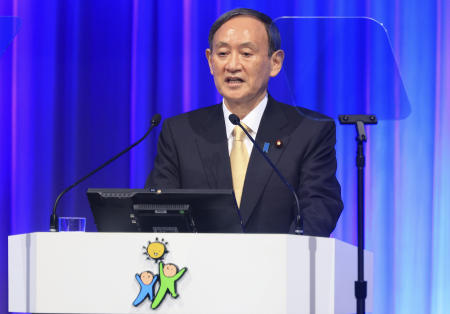
- ARAB NEWS
- 31 Jul 2025

TOKYO: The Japanese government fully lifted its second state of emergency over the novel coronavirus at the end of Sunday after extending it twice, while the nation remains on high alert for a rebound of infection cases.
Tokyo and neighboring Saitama, Chiba and Kanagawa, the last four prefectures remaining under the state of emergency, were removed from the measure.
Aiming to prevent a fourth wave of infections and bring the coronavirus under control, the government will call for full-fledged measures against the virus to be kept in place at eating and drinking establishments, as well as strengthen the coronavirus testing and medical service systems.
“We’ll work on containing the virus as soon as possible and taking back a safe and lively normal life,” Prime Minister Yoshihide Suga said in a speech at an annual convention of the ruling Liberal Democratic Party on Sunday.
“We’ll remain alert for coronavirus variants and aim to prevent a rebound of infections without lowering the guard,” he added.
The state of emergency was declared on Jan. 8 for the four metropolitan prefectures and expanded later in January to cover seven out of the 43 other prefectures of the country — Tochigi, north of Tokyo, Aichi and Gifu in central Japan, Osaka, Kyoto and Hyogo in western Japan, and Fukuoka in southwestern Japan. The emergency ended on Feb. 7 in Gifu and Feb. 28 in the six central, western and southwestern prefectures.
Despite the full removal of the emergency, there is no room for optimism as the nation is seeing signs of a resurgence of the coronavirus, with new infection cases ceasing to decrease and starting to increase in some areas.
Also with infections with mutant strains, which are believed to be more contagious than the original virus, on the increase, the central and local governments are facing a difficult task of balancing coronavirus countermeasures and efforts to reinvigorate economic activity.
Restaurants and bars in Tokyo and the three surrounding prefectures will be asked to close by 9 p.m. between Monday and March 31, longer than by 8 p.m. while the state of emergency was in place.
For April and later, the governments of the four prefectures plan to allow these facilities to operate even longer in stages while continuing to ask them to close earlier than under normal condition for the time being.
Ahead of the cherry blossom-viewing season and with people tending to hold farewell and welcome parties toward the end of the current fiscal year and the start of the new year, the central government will repeatedly call on the public to refrain from dining in large groups and avoid the three Cs of closed, crowded and close-contact settings. The country’s current fiscal 2020 ends on March 31.
The government will also expand screenings for coronavirus variants and monitoring tests on coronavirus carriers with no symptoms. It will also review its program of securing hospital beds for coronavirus patients and facilities hosting infected people with no or mild symptoms, in preparation for a possible new wave of infections.
JIJI Press